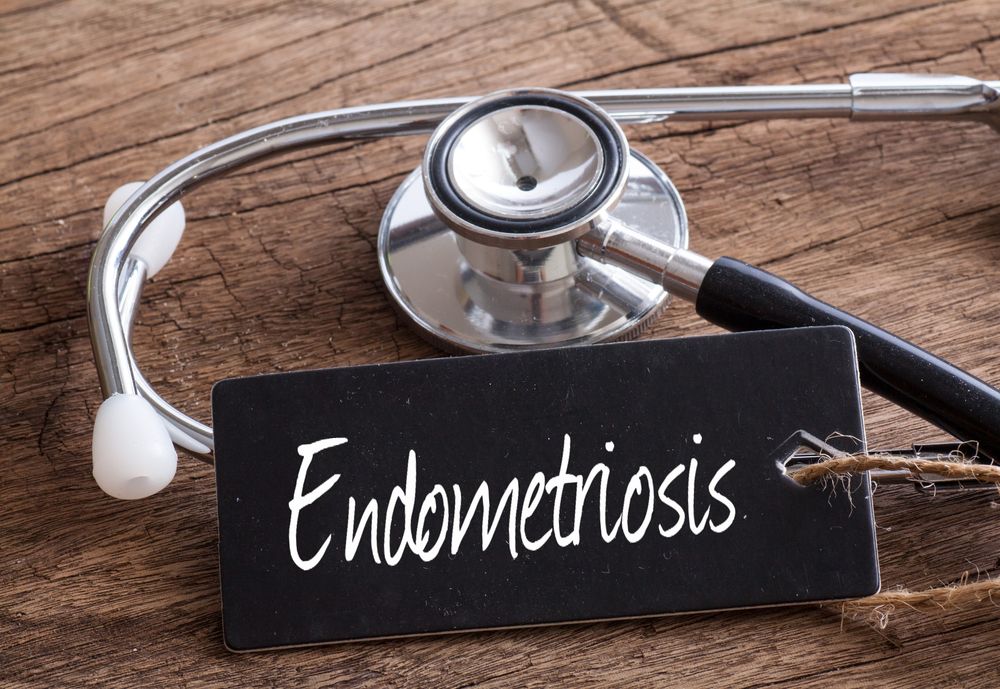
Endometriosis-related pain symptoms and HRQoL
A recent study examined which primary symptoms affect health-related quality of life in patients with endometriosis-related pain.
©Lemau Studio/shutterstock.com

Dysmenorrhea, chronic pelvic pain, and to a lesser extent deep dyspareunia are the primary symptoms affecting health-related quality of life (HRQoL) in patients with endometriosis-related pain, according to a cross-sectional, observational Brazilian study. The research looked at 77 consecutive women with deep infiltrating endometriosis who were preparing to undergo laparoscopy for pain and/or infertility related to endometriosis. The study was conducted between June 2011 and August 2013 at the Crispi Institute for Minimally Invasive Surgery in Rio de Janiero.
Few studies have looked at the effects of pelvic pain related to quality of life (QoL) and mental health. Deep infiltrating endometriosis is a painful condition that is difficult to resolve without surgery, and dysmenorrhea and deep dyspareunia are most commonly cited as associated pain syndromes. Dyspareunia may be related to several different mechanisms, according to the authors, given the wide variability in patients’ reports of pain.
The intensity of dysmenorrhea, deep dyspareunia, chronic pelvic pain, and menstrual and non-menstrual dyschezia was assessed utilizing an 11-point visual analog scale (0=no pain, 10=worst pain ever felt) that is commonly employed to evaluate endometriosis-related pain. The Brazilian versions of the self-reported SF36 and the EHP30 questionnaires were employed to evaluate HRQoL; the SF36 is a general measure of QOL and the EHP30 is specific to endometriosis-related issues.
Postsurgical results
After surgery, deep infiltrating endometriosis was found in all of the subjects. Most had lesions at five different sites, including the ovary, anterior compartment, and posterior compartment. Of Among women with VAS scores of 0, 26.8% reported no dysmenorrhea, 19.7% no dyspareunia, 35.2% no chronic pelvic pain, and 46.5% and 60.0%, respectively, no menstrual or non-menstrual dyschezia. Among women with VAS scores ≥9, 16.9% reported unbearable dysmenorrhea, 38.0% unbearable dyspareunia, 14.1% unbearable chronic pelvic pain, 9.9% unbearable menstrual dyschezia, and 4.3% unbearable non-menstrual dyschezia.
On multivariate analysis, dysmenorrhea was found to have the most independent behavior, occurring separately from other pain symptoms, while chronic pelvic pain and dyspareunia were the most similar correlated variables. When symptoms were correlated with the SF36 and EHP30 to determine the relationship between endometriosis-related pain symptoms and HRQoL, dysmenorrhea and chronic pelvic pain were found to be most correlated. In all cases, said the researchers, the more intense the pain from the symptom, the worse the patient’s QoL.
Dyspareunia was a symptom less important to QoL than dysmenorrhea and chronic pelvic pain.
The authors noted that the study may be limited by selection bias in relation to race, smoking, level of education, and level of endometriosis information.
Treating endometriosis pain
The authors advised that endometriosis pain must be treated differently in each individual woman with the disease, and physicians should keep in mind that patients’ perceptions of endometriosis pain may differ from their own clinical perceptions. In addition, patients may underreport dyspareunia due to embarrassment or social/cultural inhibitions.
The researchers called for additional study of endometriosis-related pain and HRQoL, and particularly the links between dyspareunia and psychological and relationship factors, and sexual function. “Improving sexual function, not just reducing pain during intercourse, should be considered a major clinical goal of endometriosis treatment,” they wrote.
Addressing mental health risks in endometriosis patients
December 10th 2024A new study underscores the critical need for gynecologists and mental health professionals to collaborate in managing anxiety, depression, and sexual dysfunction in women with endometriosis, driven by chronic pain and related comorbidities.
Read More
Study finds high rates of incidental MRI findings in endometriosis cases
October 29th 2024A recent study highlights the frequent occurrence of incidental findings on pelvic magnetic resonance imaging for endometriosis, emphasizing the need for radiologists to focus on those with higher clinical significance.
Read More
Addressing mental health risks in endometriosis patients
December 10th 2024A new study underscores the critical need for gynecologists and mental health professionals to collaborate in managing anxiety, depression, and sexual dysfunction in women with endometriosis, driven by chronic pain and related comorbidities.
Read More
Study finds high rates of incidental MRI findings in endometriosis cases
October 29th 2024A recent study highlights the frequent occurrence of incidental findings on pelvic magnetic resonance imaging for endometriosis, emphasizing the need for radiologists to focus on those with higher clinical significance.
Read More
2 Commerce Drive
Cranbury, NJ 08512
All rights reserved.